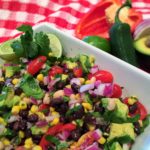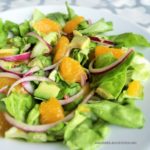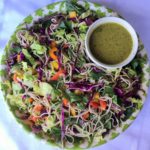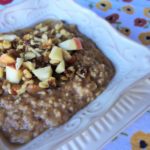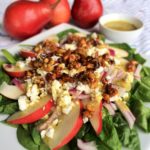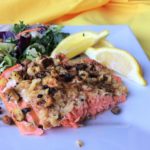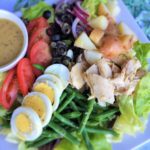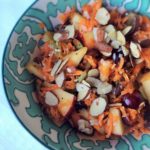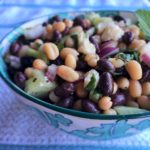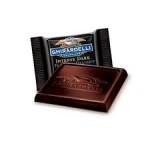Top Five Foods for a Healthy Heart
Dark chocolate, avocados, nuts and seeds, oats and olive oil, fish and black beans. I always love telling folks what to ADD to their diets rather than take AWAY. It’s much more fun! Yes, there are food felons which should be limited like high saturated fatty foods like cheese, whole milk, cream, red meat as well as high sugary foods like cakes, cookies and candy bars which raise blood sugar and concomitantly, blood fats.
But this post is all about the beautiful food we need to be eating on a regular basis to keep our heart free of clogging debris gradually built from years of neglect and disconnect. By disconnect I mean not eating the foods we know will heal us and vice versa, eating foods we know will harm us.
If you’ve been following my blog you know I’m not a 100% kind of dietitian; it’s nearly impossible to tow the line all the time. I espouse to an 80/20 rule which states that success/health comes when we follow recommendations 80% of the time allowing for a 20% leeway to enjoy foods that are not necessarily on the heart-healthy list. Maybe you’re at a 60/40 or a 70/30. We all have improvements to make, so work to achieve an 80/20 and then feel good about your eating patterns. There might come a time when foods you thought you couldn’t live without no longer tug at your core desires and foods that heal your body become an integral part of your diet. Good for you! This is progress and is the path that moves us along the continuum to good health.
1) Avocados and Olive Oil.
Rich in monounsaturated fats which are super heart-healthy, avocados provide a lovely creaminess we often miss when creams and cheeses are limited in the diet. Use on salads, in smoothies, as a spread on sandwiches, in dips and anywhere you want a smooth texture. A recommended amount is 1/2 avocado per day as a replacement for saturated fats. A recent study suggests that when an avocado is eaten daily, LDL-cholesterol (the “lousy” type of cholesterol) decreases. Good news for avocado lovers!
The American Heart Association provided this video demonstrating what to look for when choosing an avocado.
Another monounsaturated fat, olive oil helps keep arteries clear and inflammation down to a minimum. Olive oil is rich in omega-9 fatty acids, a member of the inflammation-cooling family which protect the heart. Look for extra-virgin olive oil (cold pressed, first harvest, with only 1% acid content, no more than two years old, sealed by the North American Olive Oil Association or the California Olive Oil Council). I use olive oil (or avocado or grapeseed oils) in salad dressings and occasionally saute with it if high heat is not needed. High heat will destroy much of the health properties of the oil. A recommended amount is 1-2 Tbsp per day.
2) Nuts and seeds.
Birds aren’t the only ones to love nuts and seeds. Most varieties are loaded with heart-healthy omega-3 fatty acids, another member of the inflammation-cooling, artery-protective family. Walnuts are particularly rich in ALA omega-3 (along with avocados, flax seeds, canola oil, chia seeds and purslane, a salad green.) ALA omega-3’s are plant-based and have been shown to reduce heart-attack risk by 60% and slashes “lousy” LDL-cholesterol when just 1 gram of ALA are eaten daily. That’s the equivalent of 7 walnut halves per day. Getting twice that is even better! A recommended amount is 1.1 – 1.6 grams per day.
Another great benefit of ALA omega-3’s is to boost blood sugar processing resulting in a heightened sensitivity to insulin-the hormone that lets cells concert blood sugar to energy. Good news for diabetes prevention.
ALA omega-3 in food: 1 Tbsp flaxseed oil-7.3 grams, 14 walnut halves-2 grams, 1 Tbsp ground flax or chia seeds-1.6 grams, 1 Tbsp walnut oil-1.3 grams, 1 cup purslane leafy greens-0.4 grams, 1 cup sliced avocados-0.16 grams
3) Salmon (and other fatty fish).
The most well known members of the anti-inflammation family are the DHA and EPA omega-3 fatty acids which include fish like salmon, mackerel, herring, lake trout, sardines and albacore tuna. Most of us take an omega-3 fish oil supplement. Eating fish 2-3 times per week and adding a daily supplement ensures adequate amounts of this protective element. Look for wild, not farm-raised salmon for maximum omega-3’s. A recommended amount is 3-4 ounces fatty fish 2-3 times per week.
4) Oats (and other soluble fibers)
Dietary fibers are found naturally in the plants that we eat. They are parts of the plant that do not break down in our stomachs, and instead pass through our system undigested. Dietary fibers are made up of two main groups: insoluble and soluble fibers. Each has great health benefits and should be included in our daily diets.
Insoluble fibers include whole wheat, whole grains, wheat bran, corn bran, seeds, nuts, barley, couscous, brown rice, bulgur, zucchini, celery, broccoli, cabbage, onions, tomatoes, carrots, cucumbers, green beans, dark leafy vegetables, raisins, grapes, fruit, and root vegetable skins. They help create bulk, do not dissolve in water and move things through our digestive systems helping to prevent constipation.
Soluble fibers typically include oatmeal, oat cereal, lentils, apples, oranges, pears, oat bran, strawberries, nuts, flax seeds, beans, dried peas, blueberries, cucumbers, celery, and carrots. They attract water and form a gel, slowing down digestion, giving you a feeling of fullness and delaying absorption of blood sugar. They can also help lower LDL (“lousy”) blood cholesterol by interfering with the absorption of dietary cholesterol.
A recommended amount is 25 grams from both insoluble and soluble fibers per day.
5) Dark Chocolate.
High concentration of compounds called “flavonoids” in chocolate may lower blood pressure and improve peripheral artery disease, according to the American Heart Association. Flavonols provide antioxidant benefits. Antioxidants are believed to help the body’s cells resist damage caused by free radicals that are formed by normal bodily processes, such as breathing, and from environmental contaminants, like cigarette smoke. If your body does not have enough antioxidants to combat the amount of oxidation that occurs, it can become damaged by free radicals. For example, an increase in oxidation can cause low-density lipoprotein (LDL), “lousy” cholesterol, to form plaque on the artery walls.
Lest we start binge eating chocolate cake and candy bars, we have to consider the type of chocolate and the amount of chocolate consumed. Stick with a dark chocolate and unprocessed cocoa which contains at least 72% cocoa and a recommended serving is 1 ounce per day. (3 small squares.) Don’t forget to eat other flavonoid-rich foods like apples, red grapes, green tea, onions and cranberries.



